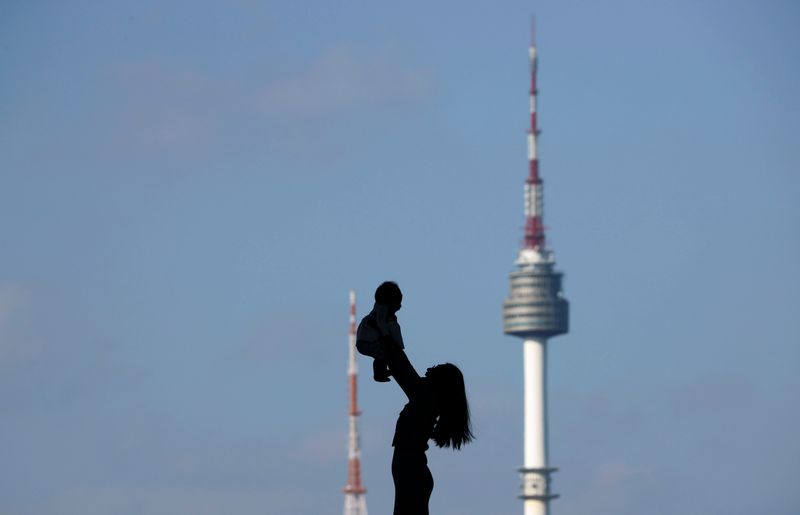By Cynthia Kim and Jihoon Lee
SEOUL (Reuters) – South Korea is launching a high-speed rail service that will reduce travel time between central Seoul and its suburbs, a project officials hope will encourage more young people to consider homes outside the city and start having children.
South Korea has the lowest fertility rate in the world, and its young people have often cited long commutes and cramped, expensive housing in greater Seoul, where about half the population lives, as key reasons for not getting married and starting a family. family.
The birth rate in Seoul is even lower than the national average, and the government has tried to increase the number of newborns through subsidies, with little success.
Officials now pin their hopes on the Great Train eXpress (GTX), a 134 trillion won ($99.5 billion) underground fast train project that, by 2035, will provide six lines connecting Seoul to several peripheral areas .
On Friday, President Yoon Suk Yeol inaugurated a section of the first line, which will reduce travel time from the capital Suseo to the satellite city of Dongtan to 19 minutes from the current 80 minutes by bus.
The shorter commute “will allow people to spend more time with family in the morning and evening,” he added.
The line is expected to enter service on Saturday, and once fully operational, the GTX will be one of the fastest underground systems in the world, with trains traveling at speeds of up to 180 km per hour (112 mph), officials said.
Owning a home in South Korea is expensive, with average prices peaking in June 2021 after rising 45% in five years. Seoul is particularly expensive and offers the worst value per square meter of any advanced economy, analysts say.
Land Minister Park Sang-woo told Reuters the GTX would allow young people to consider homes far from the capital without having to spend hours commuting. The time of their return can be dedicated to their families, he added.
“With a two-hour commute home, for example, how can you find time for children? The idea is to give people more free time after work,” he said.

Some analysts, however, say GTX could contribute to the decline of South Korea’s rural areas, sucking more people into the already overcrowded capital.
“To revive regional cities at risk of extinction, the most important thing is to equip other areas with a similar kind of public infrastructure as well,” said Kim Jin-yoo, professor of urban planning and transportation engineering at Kyonggi University .